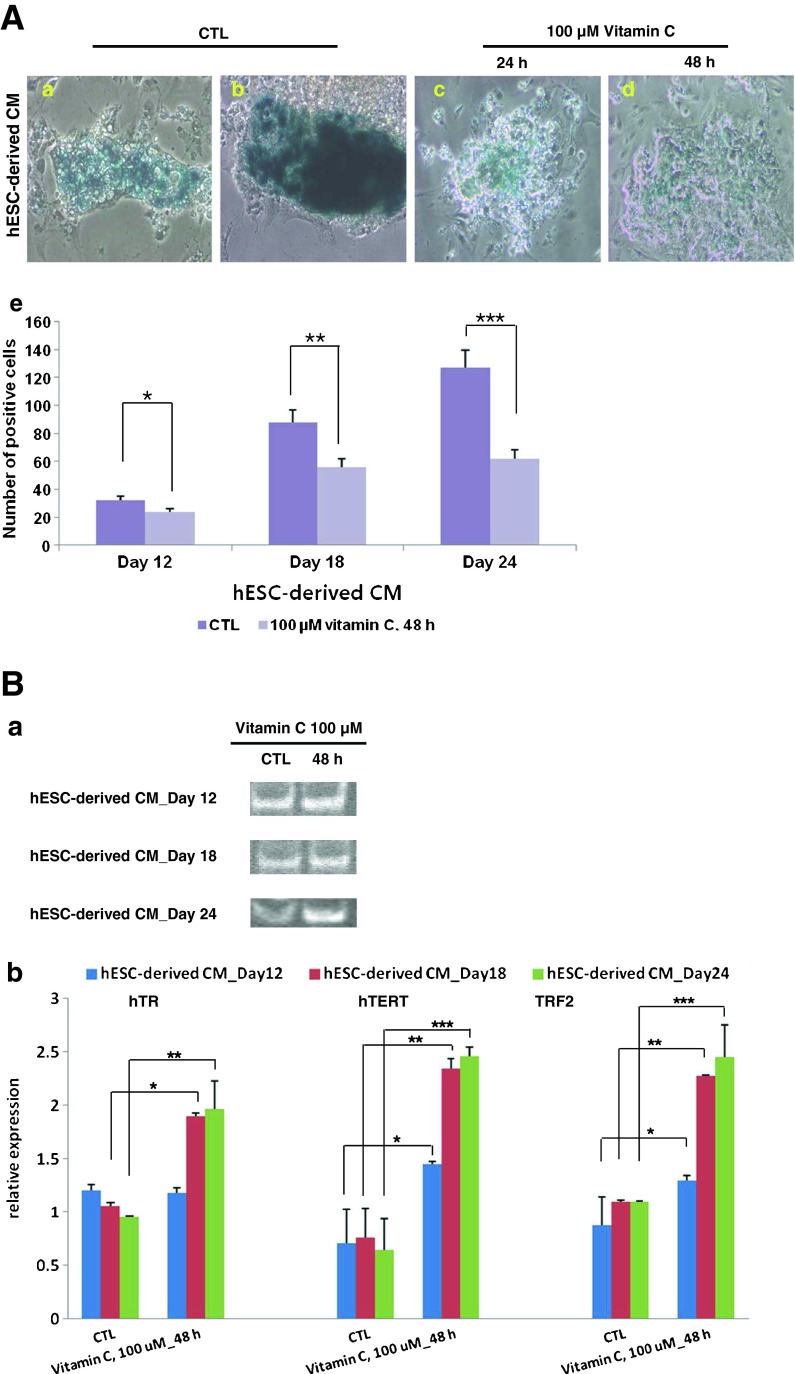Fig. 4.
The anti-aging effect of vitamin C on hESC-derived CMs. To reverse the aging phenomenon of hESC-derived CMs, vitamin C at 100 and 250 μM was added for 24 and 48 h. A SA-β-gal staining of day 24 hESC-derived CMs after treatment of vitamin C (100 μM). The number of SA-β-gal-stained cells and the intensity of staining were both significantly reduced. a, b β-gal-stained, hESC-derived CMs (150× magnification); c, d β-gal-stained, hESC-derived CMs following 24 h vitamin C treatment (150× magnification); e according to FACS measurement, the number of stained cells significantly decreased after vitamin C treatment. B Telomerase activity and expression of telomere-related genes hTR and hTERT at each stage of hESC-derived CM differentiation. a Telomerase activity in hESC-derived CMs. The product of each group was sequentially loaded. The left lane holds non-treated control and the right lane holds the respective vitamin C 100 μM 48 h-treated groups. b Expressions of telomerase-related genes, hTR and hTERT, and TRF2 were analyzed for each stage in hESC-derived CMs. Gene expression between the control group and vitamin C-treated group is compared

